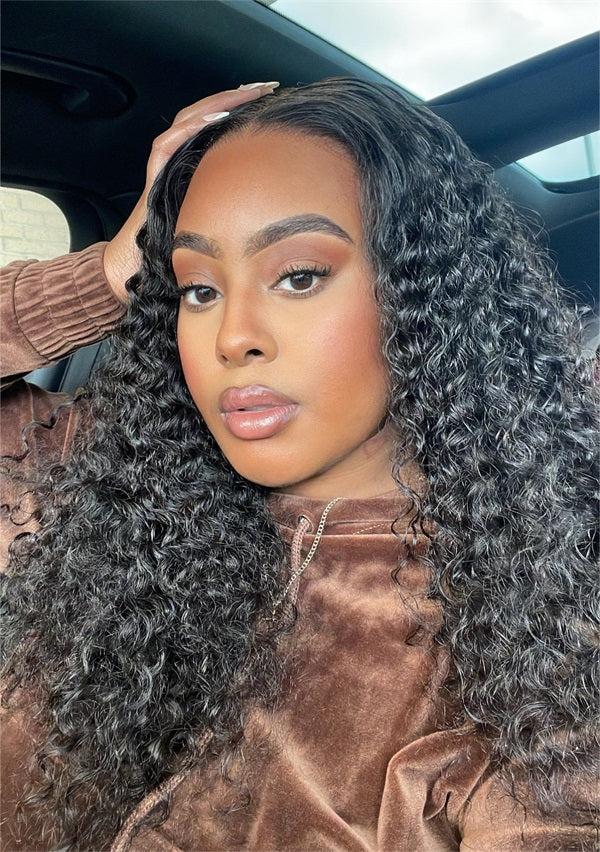Have you ever wondered why human hair wigs are more expensive than their synthetic counterparts? In this blog, we will explore the reasons behind the higher price tag of human hair wigs.

Types of Human Hair Used in Wigs

These are the primary hair types used in human hair wigs. Each type has its own characteristics, and the choice of hair type can greatly influence the appearance and cost of the wig. Here are 4 most common wig hair types:
1. European Hair
European hair is popular for its strength and ease of styling. However, due to the limited number of donors and the high cost of procurement, wigs of this type of hair are generally expensive. Many high-end brands sell European hair wigs for hundreds or even thousands of dollars. Even so, the natural appearance and strength are fairly similar to those found in other types of hair.
2. Asian Hair
Asian hair, especially wigs from China or India, are favored for their lower procurement prices and abundant supply chains. Many women make their livings by selling their hair, ensuring a steady supply of hair, making these wigs relatively reasonably priced. Although Asian hair is generally softer, its strength should not be underestimated, and the price is usually mid-range.
3. Brazilian, Peruvian, and Malaysian Hair
Brazilian hair is favored for its natural texture, and although it is mid-priced, its strength and shine make the wigs more attractive. In contrast, Peruvian hair is known for its softness and silky touch, but it is also slightly more expensive. Malaysian human hair is known for its natural sheen and straight texture, and is generally cost-effective, suitable for consumers with limited budgets but seeking high quality.
4. Mongolian hair
Mongolian human hair is valued for its density. The toughness and thickness of Mongolian hair make it a good choice when creating curls. The hard hair can hold waves and curls well, and its structure can provide enough support to make the curls fuller and longer-lasting.
Why are Human-Hair Wigs More Expensive
Human hair wigs require natural human hair, which is in limited supply. Finding people willing to donate their hair is not easy, and it is most commonly sourced from Asian countries like Vietnam, China, and India. Companies have to travel to these countries, check the quality of the hair, and compensate the donors. This adds to the overall cost.
2. Time-Consuming Production
Making human hair wigs is a time-consuming process. The hair needs to be cleaned, detangled, sorted, and attached to a base made of silk or lace. The strands are knotted by hand onto the base, and this process can take up to 10 hours per wig. The hair also undergoes sorting based on length, color, texture, and whether it has been dyed. The meticulous production process increases the cost.
3. Increasing Demand
The demand for human hair wigs is growing, especially with the rise of social media platforms like Instagram. More people want natural-looking hair extensions and wigs for various styles, without damaging their own hair and scalp. This increased demand against a limited supply drives up the cost.
4. Sourcing and Ethical Considerations
The source of the hair affects the cost. Some manufacturers source hair from salons, drain pipes, or hair donations, which are cheaper options. Others may travel directly to women who are willing to sell their hair, which adds to the cost. Ethical fair trade suppliers may pay higher prices to the donors.
Several Factors that Can Impact the Cost of Human Hair Wigs
Hair Type: The type of hair used in the wig can greatly affect the cost. "Remy hair," which is hair collected from ponytails with all the cuticles going in the same direction, is more expensive compared to floor hair, which is collected after someone's haircut.
Ethnicity of Hair: Different ethnicities contribute to different hair types. Chinese hair is the most commonly used and is straight and coarser, making it less expensive. Indian hair is more textured with natural body and movement. European hair is the rarest one, which makes it the most expensive and also harder to come by.
Length: The length of the hair used in the wig can impact its cost. Shorter bob length hair is easier to source and more commonly available, making it less expensive. Longer buss down hair takes longer to grow and is harder to find, so wigs with longer hair tend to be more expensive.
Cap Construction: The way the cap of the wig is constructed can affect its cost. Machine-wefted non lace wigs are quicker and less expensive to produce, while hand-tied lace wigs require each hair to be tied by a skilled artisan, making them more labor-intensive and expensive. Hand-tied lace wigs often provide a more natural feel and appearance.
Material Quality: The quality of materials used in the wig, especially in lace fronts, can impact the cost. Asian lace, which is commonly used, is thicker and less comfortable compared to Swiss lace, which is softer, thinner, and of superior quality. Wigs using Swiss lace are more expensive.
Craftsmanship: The level of craftsmanship involved in making the wig can also affect its cost. High-quality wigs typically have one to two hairs per knot, which requires a greater amount of time and skilled artisans. This level of craftsmanship creates a more natural-looking 13x6 lace front and a seamless transition within the wig.

Final Words
While human hair wigs may come with a higher price than synthetic wigs, they offer an unparalleled level of quality, natural appearance, longevity, and versatility. So, the price of a human hair wig must be well worth it for the benefits it offers.Read More
How to Care for Human Hair Wig








